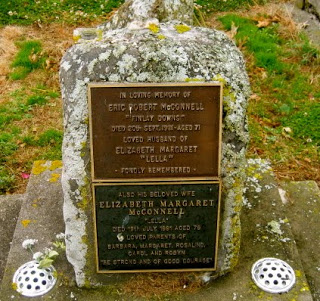I have been to Galipolli twice. The first time I did not land but rather cruised up the Dardanelles on a ship. The next time I joined the small group of NZ soldiers serving in Bosnia with NATO. It was the 85th anniversary of the landings so there was a huge crowd expected. We visited the museum the day before ANZAC day and got our heads around the sheer presence of the place. The museum is packed full of shocking photos, artifacts, human bones and interesting things like bullets that had hit each other in mid air and melded together! It was a day of taking it all in. I visited ANZAC cove where the Kiwis came ashore and saw the first cemetery that had New Zealand men. Many so young, most under 20.
ANZAC cove was quite an emotional sort of a place. As a soldier it was a campaign I had studied and heard so much about. It was a defining moment in the history of our country, certainly of the NZ Army. I think the thing that affected me the most was understanding just how far away from home these men were and just how big the task was they were expected to do first up in a long war!
ANZAC day itself was heaving. The Australian and New Zealand Prime Ministers were present and so were a large NZ Army contingent do the formal ceremonial parades and memorial guards. The Bosnia Contingent left two vans in the huge line of traffic and we walked the last few km to the Dawn Service. The road was littered with bumper to bumper traffic and there were many thousands of Aussie and Kiwi backpackers. The sunrise over ANZAC cove and the service gave the place a mystical feel and the crowd was very silent. The bugler doing the Last Post chilled us all.
The rest of the day was spent walking up the cliffs and visiting the ceremonys and many different battle memorials. I enjoyed the main Australian service at “Lone Pine” and then the New Zealand ceremony at the “Chunk Bair” memorial. The New Zealand Defence Force Cultural Group performed the Haka and the Prime Minister spoke. Turkish soldiers had a very high profile presence as part of the security. This first photo was taken at the Chunuk Bair Memorial.
After the service and reading the role of those killed from many New Zealand Regiments, we decided that rather than take the long track back down the cliffs, the direct “bush bashing route down a large ridge line would be a better way to get to the vehicles. The Infantry Section that was with us led the push with the scouts up front finding the way through heavy scrub, blackberry type bush, rusted equipment and trenches. After a long walk through a river bed finding small plots full of Indian and Canadian soldiers, we came across a small cemetery of 25-30 plots. Closer inspection found it was in the main full of men from the Canterbury Regiment at “Outpost 1”. This second picture is taken in this quiet spot.
Researching it after I returned to NZ it seems these men were killed trying to outflank the enemy. Caught in the open by raking machine guns. Our drivers walked back for the vehicles while the remainder of us waited in the sun in that quiet spot for several hours. I spent the time reading each headstone and leaving poppies. It felt good to be with these guys for a while because given their location so far from the main walkways it was obvious not many visited them.
Gallipoli for me was just somewhere I had to go in my life. It was a “bucket list thing” I now realise and the experience was amazing. Turkey is such a full on diverse place but the people are warm and friendly and whilst they without doubt enjoy the tourists dollars that the area brings, they genuinely seem to care. The plots and sites are well tended and looked after and their attitude is quite refreshing. Then there is the carpet trade they rob you blind on, but that is another story!
As ANZAC day rolls around I always reflect on those guys who stepped up, got stuck in and now lie so far from home. That is why we remember them.
Like this article? Other ANZAC Tributes and Topics
ANZAC: Johnny McNutt- A Good Southern Man: RIP Published 21 Apr 10
The “Ted d’Augvergne Bottle in the Hotel” story. A tale of intrigue from Waimate, NZ. Published 19 Apr 10
Who the Hell is Private David Nelson Wright? A local man killed in Vietnam. Published 5 Feb 10















